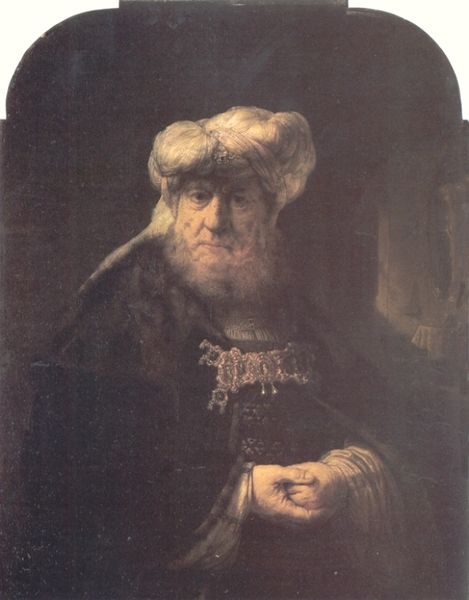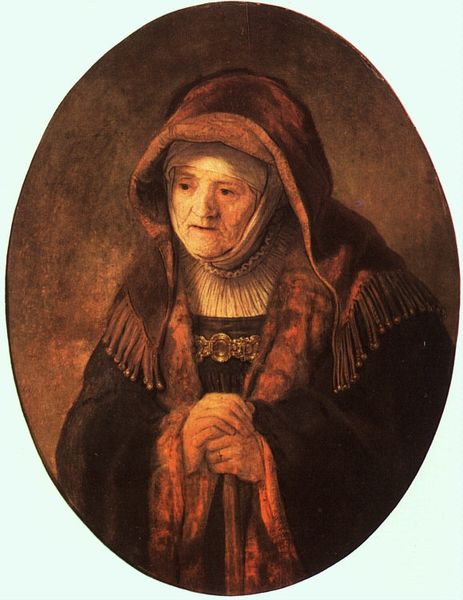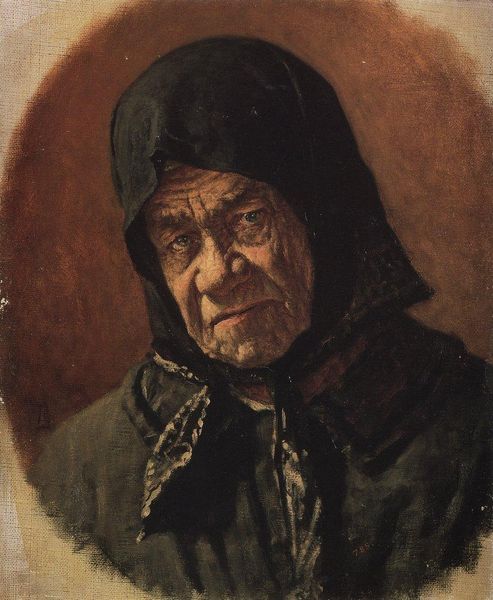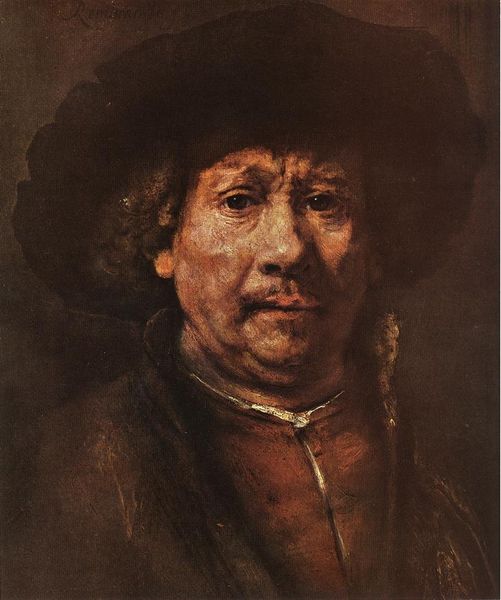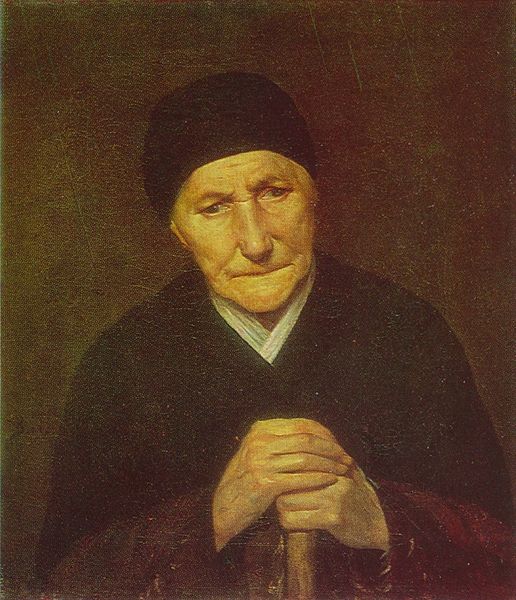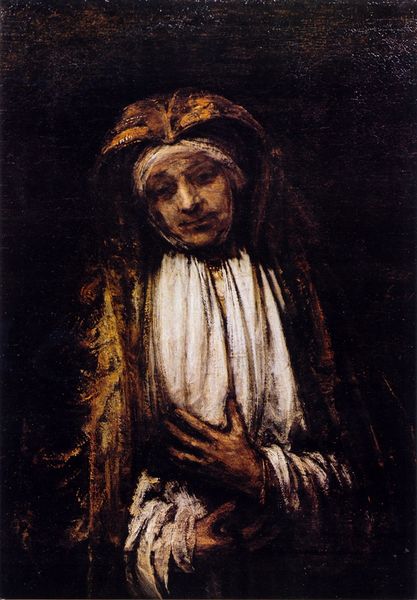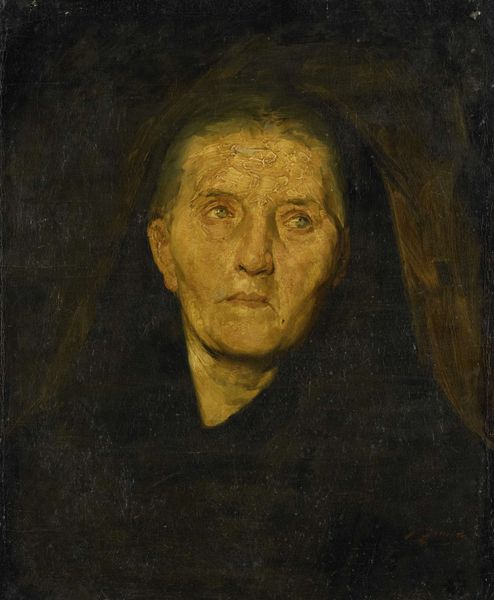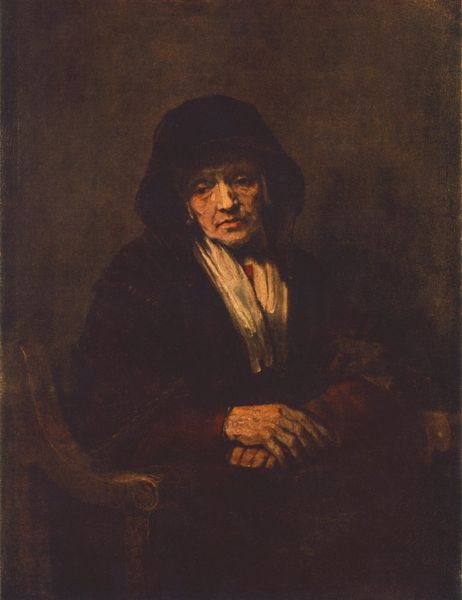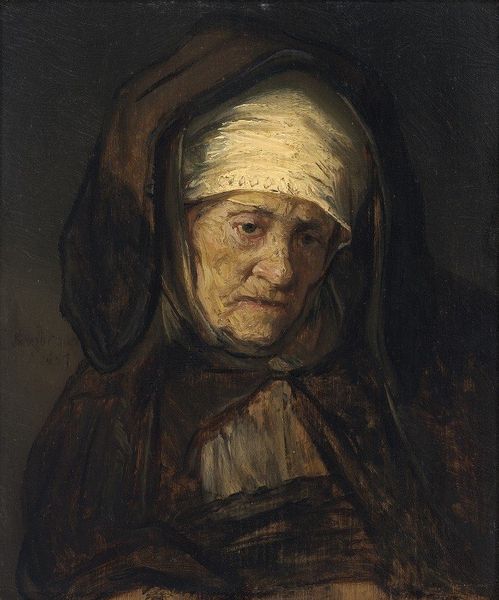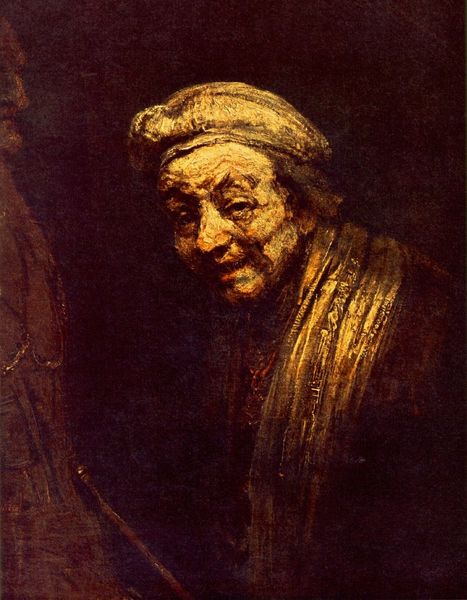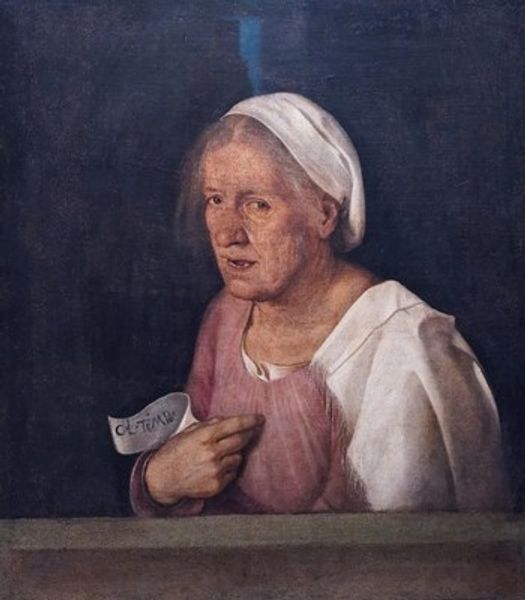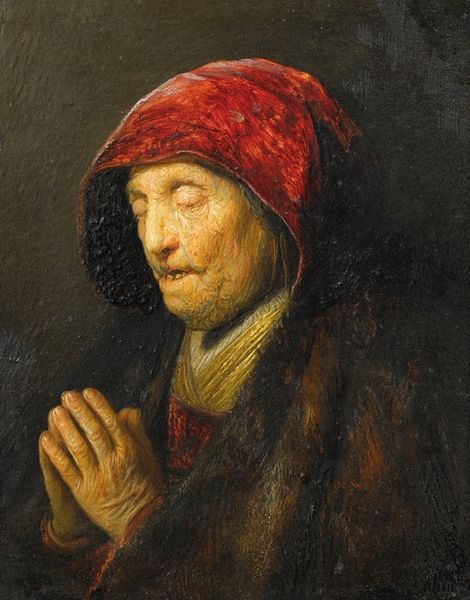
painting, oil-paint
#
portrait
#
baroque
#
dutch-golden-age
#
painting
#
oil-paint
#
oil painting
#
realism
Dimensions: 35 x 29 cm
Copyright: Public domain
Curator: Look at this compelling piece—it’s Rembrandt van Rijn's "Portrait of Mother of Rembrandt," created around 1630. What do you make of it? Editor: The weight of years, I think. There’s such a starkness, like she's shrouded in the history itself. It almost feels sepia-toned, ancient, yet piercingly present. Curator: Indeed, he uses oil paint in a way that allows for incredible detail, focusing intently on the texture of her skin. One gets a powerful sense of intimacy; that, although somber, carries respect. It also makes me think of the artist as a maker; all of the human toil and artistry embedded into each layer of pigment. Editor: And you see that in the light, don't you? He builds it up with thick, almost crusty impasto, then scrapes some of it back again, bringing that older face alive as its own landscape. Think about the social aspects in painting your family members in oil -- oil paints can outlast generations; it’s like gifting posterity something that stone and marble could never grasp: that human heart that continues to tick and to speak beyond any boundary or belief or space or time. Curator: Exactly! It speaks volumes about family lineage. Rembrandt was a master of the Dutch Golden Age, a period where realism flourished. Yet his portraits, particularly those of family, transcend simple observation. I find his application method very intriguing and very revealing of character. How do you view the composition of the materials involved in the piece? Editor: Well, that is more challenging: canvases weren't standardised then as they are today; the material substrates and layering of ground paint might have an impact on how the painting feels almost 400 years later -- that sense of gloom and somber is due more to materiality or artistic decision? Maybe, a bit of both! But there is something humbling that each thread, each grind of the oilstone played their role -- they speak for themselves now in a very eloquent tone. Curator: I agree! She’s far more than simply "mother"—she's wisdom, time, history painted right onto the canvas! Editor: Absolutely, each mark serves as a little epitaph, a tender goodbye as we, and as artists, all inch towards death... a timeless study on both life and loss if you think about it.
Comments
No comments
Be the first to comment and join the conversation on the ultimate creative platform.
